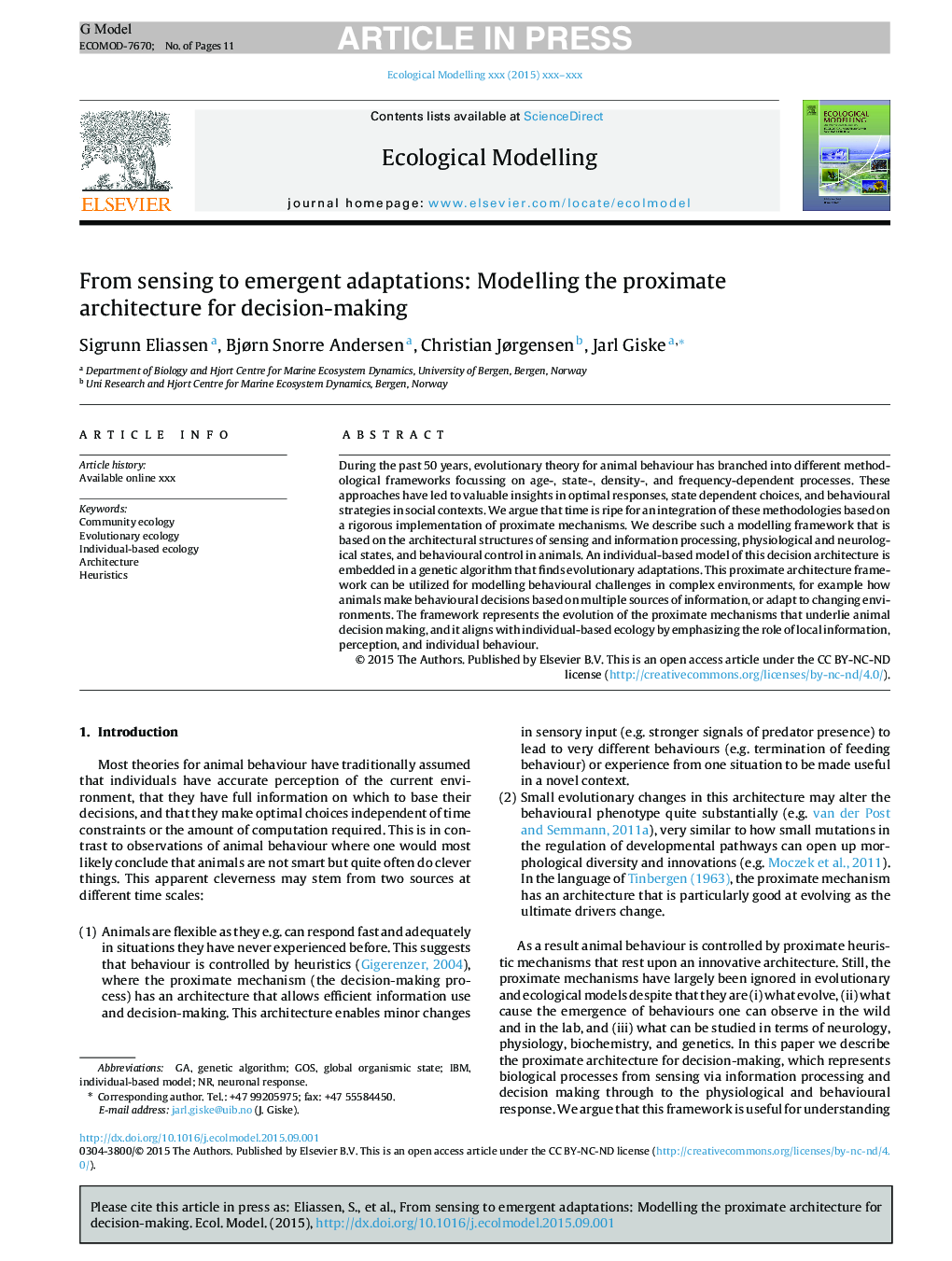| کد مقاله | کد نشریه | سال انتشار | مقاله انگلیسی | نسخه تمام متن |
|---|---|---|---|---|
| 6296343 | 1617421 | 2016 | 11 صفحه PDF | دانلود رایگان |
عنوان انگلیسی مقاله ISI
From sensing to emergent adaptations: Modelling the proximate architecture for decision-making
ترجمه فارسی عنوان
از حساسیت به سازگاری های ظهور: مدلسازی معماری مجاور برای تصمیم گیری
دانلود مقاله + سفارش ترجمه
دانلود مقاله ISI انگلیسی
رایگان برای ایرانیان
کلمات کلیدی
ترجمه چکیده
طی 50 سال گذشته، نظریه تکاملی برای رفتار حیوانات به چهارچوب متدولوژیکی متفاوتی متمرکز شده است که تمرکز بر فرآیندهای وابسته به سن، حالت، تراکم و فرکانس است. این رویکردها به بینش ارزشمند در پاسخ های بهینه، انتخاب های وابسته به دولت و استراتژی های رفتاری در زمینه های اجتماعی منجر شده است. ما استدلال می کنیم که زمان برای ادغام این روش ها بر پایه اجرای دقیقی از مکانیزم های مجاور رسیده است. ما چنین مدل چارچوبی را توصیف می کنیم که بر اساس ساختارهای معماری پردازش اطلاعات و پردازش اطلاعات، وضعیت فیزیولوژیک و عصبی، و کنترل رفتاری در حیوانات است. یک مدل مبتنی بر فرد از این معماری تصمیم گیری در یک الگوریتم ژنتیکی که سازگاری تکاملی را پیدا می کند، جاسازی شده است. این چارچوب معماری نزدیک را می توان برای مدل سازی چالش های رفتاری در محیط های پیچیده، به عنوان مثال چگونه حیوانات تصمیم گیری های رفتاری را براساس منابع مختلف اطلاعات یا سازگاری با محیط های در حال تغییر، مورد استفاده قرار می دهند. این چارچوب نشان دهنده تکامل مکانیزم های نزدیک است که تصمیم گیری حیوانات را بر عهده دارند و با تمرکز بر محیط زیست مبتنی بر فرد با تأکید بر نقش اطلاعات محلی، ادراک و رفتار فردی، هماهنگ است.
موضوعات مرتبط
علوم زیستی و بیوفناوری
علوم کشاورزی و بیولوژیک
بوم شناسی، تکامل، رفتار و سامانه شناسی
چکیده انگلیسی
During the past 50 years, evolutionary theory for animal behaviour has branched into different methodological frameworks focussing on age-, state-, density-, and frequency-dependent processes. These approaches have led to valuable insights in optimal responses, state dependent choices, and behavioural strategies in social contexts. We argue that time is ripe for an integration of these methodologies based on a rigorous implementation of proximate mechanisms. We describe such a modelling framework that is based on the architectural structures of sensing and information processing, physiological and neurological states, and behavioural control in animals. An individual-based model of this decision architecture is embedded in a genetic algorithm that finds evolutionary adaptations. This proximate architecture framework can be utilized for modelling behavioural challenges in complex environments, for example how animals make behavioural decisions based on multiple sources of information, or adapt to changing environments. The framework represents the evolution of the proximate mechanisms that underlie animal decision making, and it aligns with individual-based ecology by emphasizing the role of local information, perception, and individual behaviour.
ناشر
Database: Elsevier - ScienceDirect (ساینس دایرکت)
Journal: Ecological Modelling - Volume 326, 24 April 2016, Pages 90-100
Journal: Ecological Modelling - Volume 326, 24 April 2016, Pages 90-100
نویسندگان
Sigrunn Eliassen, Bjørn Snorre Andersen, Christian Jørgensen, Jarl Giske,
